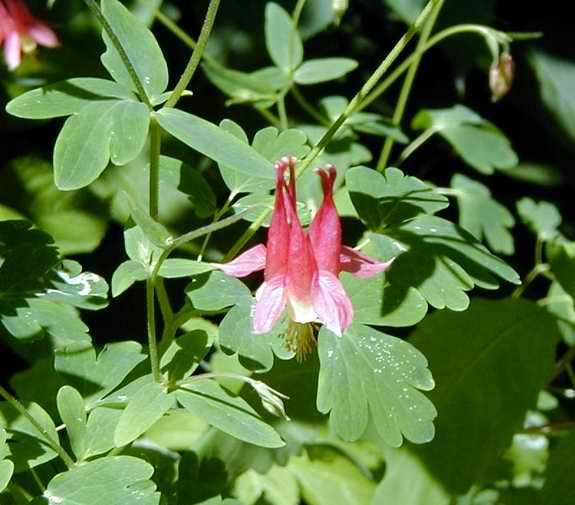|
Common Name: Wild Columbine, Clucky Bell, Meeting House, Gants du Notre Dame (French- Gloves of Our Lady), Ancolie du Canada (Quebec) Scientific Name: Aquilegia canadensis (Latin for water collector, aquilegus, as drops of rain collect in the center of the petals; also possibly eagle, aquila, for the talon shape of the spur-like petals; canadensis means from Canada) A showy, nodding flower consisting of five red petals with yellow edges that extend upward into vertical red spurs that end in nectar filled knobs Potpourri: The Wild Columbine's many folk names are due to its unique appearance. The generic name Columbine is derived from columba, the Latin word for dove, as the spurs appear as dove heads in a circle. The spurs reminded others of the talons of an eagle; the Columbine was therefore once considered as a candidate to be the national flower of the United States. Clucky Bell, Meeting House and the Gloves of Our Lady (for the five delicate petal structures) all relate to the general appearance of the flower. Native Americans used Wild Columbine in a wide variety of applications. A liquid wash was made from the plant to treat poison ivy or any other skin irritation. Its seeds were used as a means to make smoking tobacco more aromatic, thereby contributing to its persuasive powers at tribal councils. It was also believed to increase stamina and was accordingly spread as a paste on the legs of horses and humans before a race. Ancient herbalists used Columbine to treat abdominal pains, to reduce the swelling of the liver, and to treat measles and smallpox. However, recent laboratory testing has revealed that the plant contains prussic acid and strong alkaloids, which are toxic in large doses. |
